Blooming Palm Wall Art & Canvas Prints
Blooming Palm Wall Art & Canvas Prints
Couldn't load pickup availability
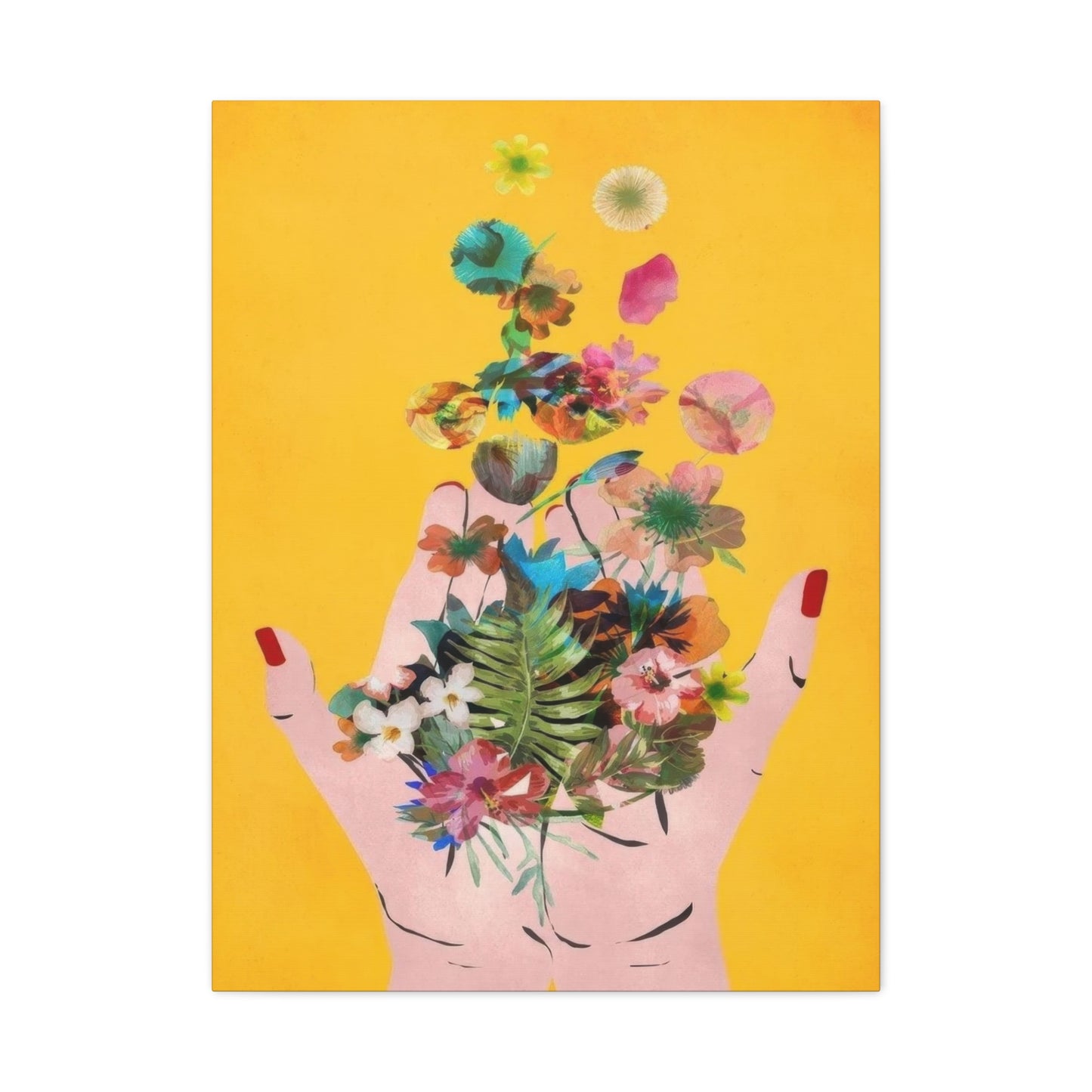
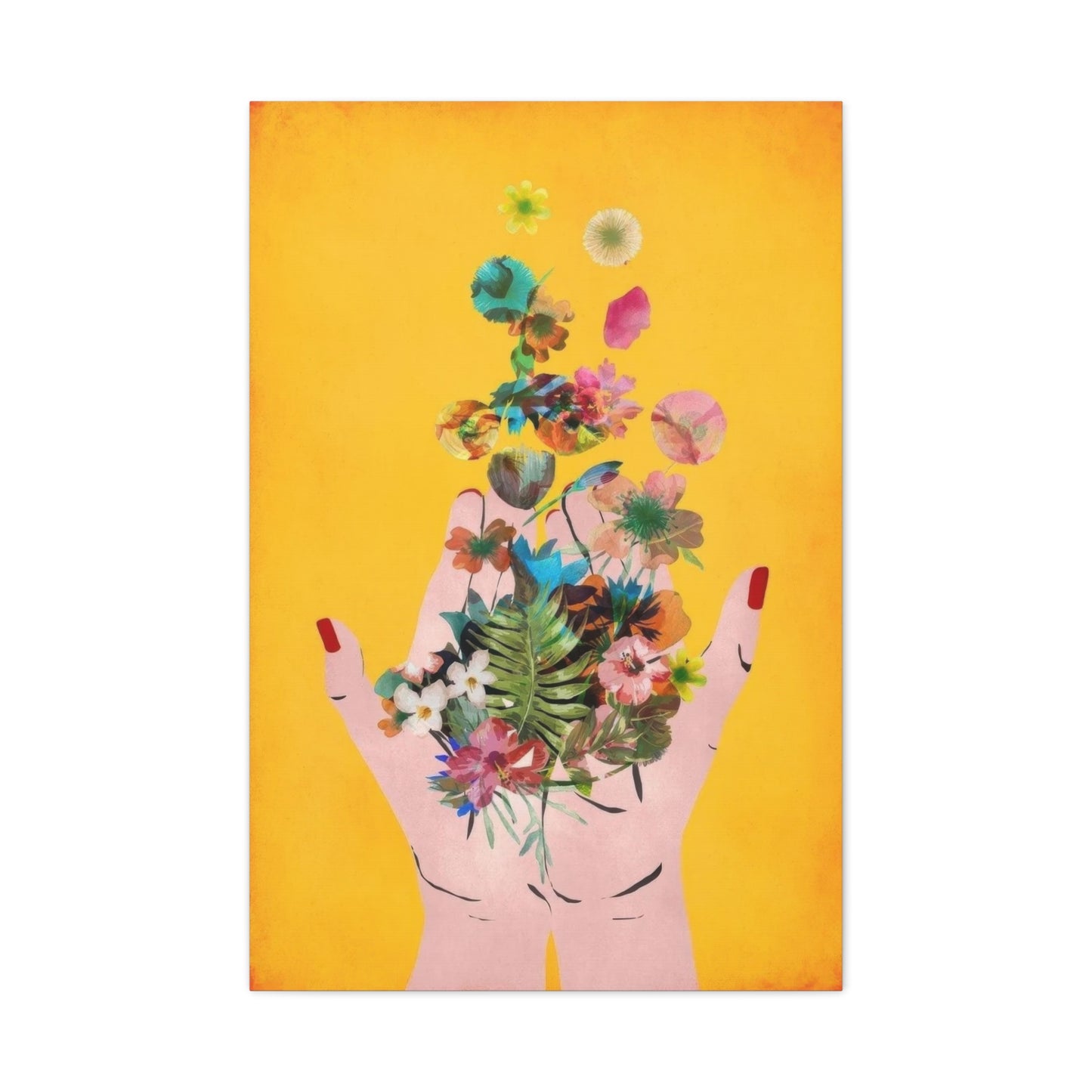



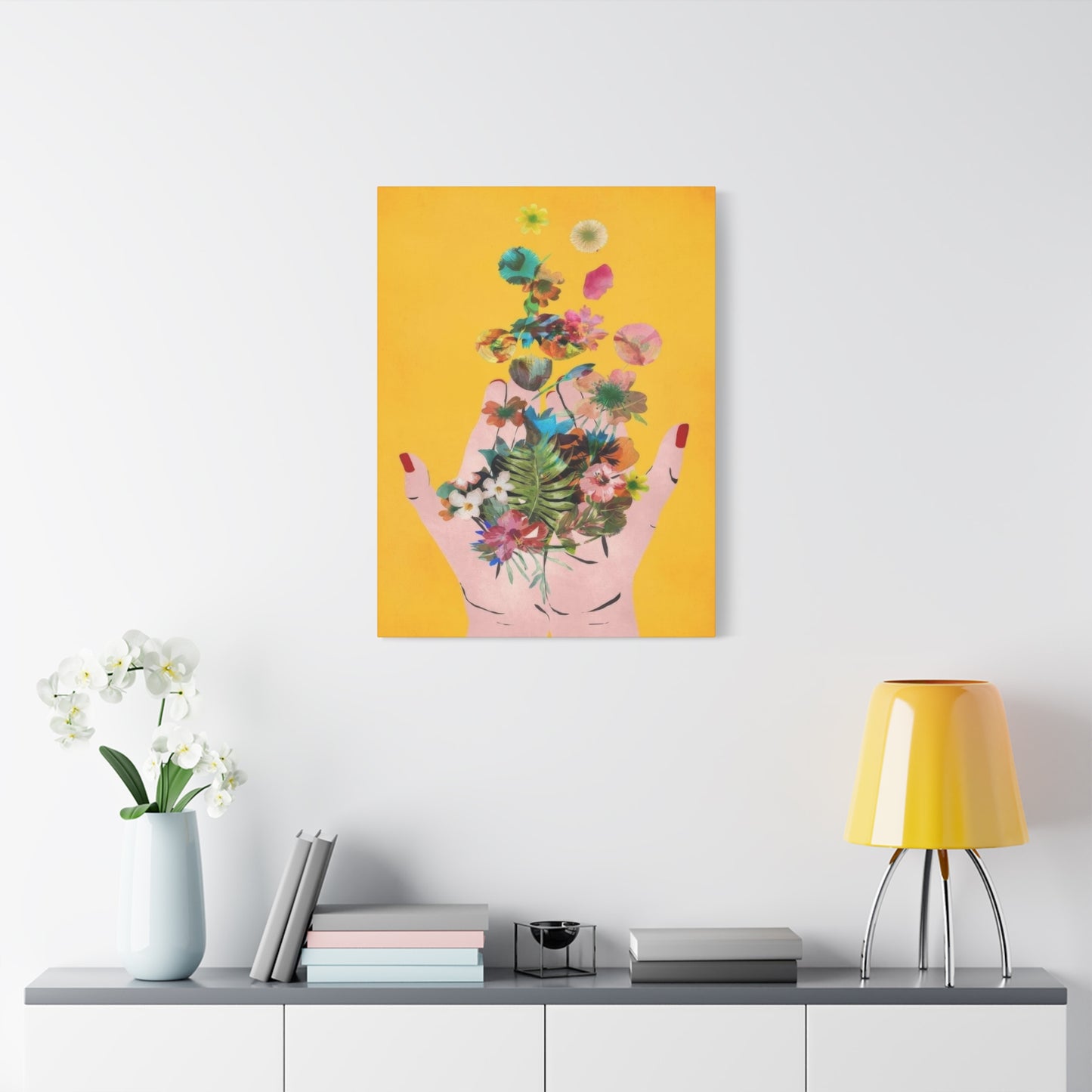
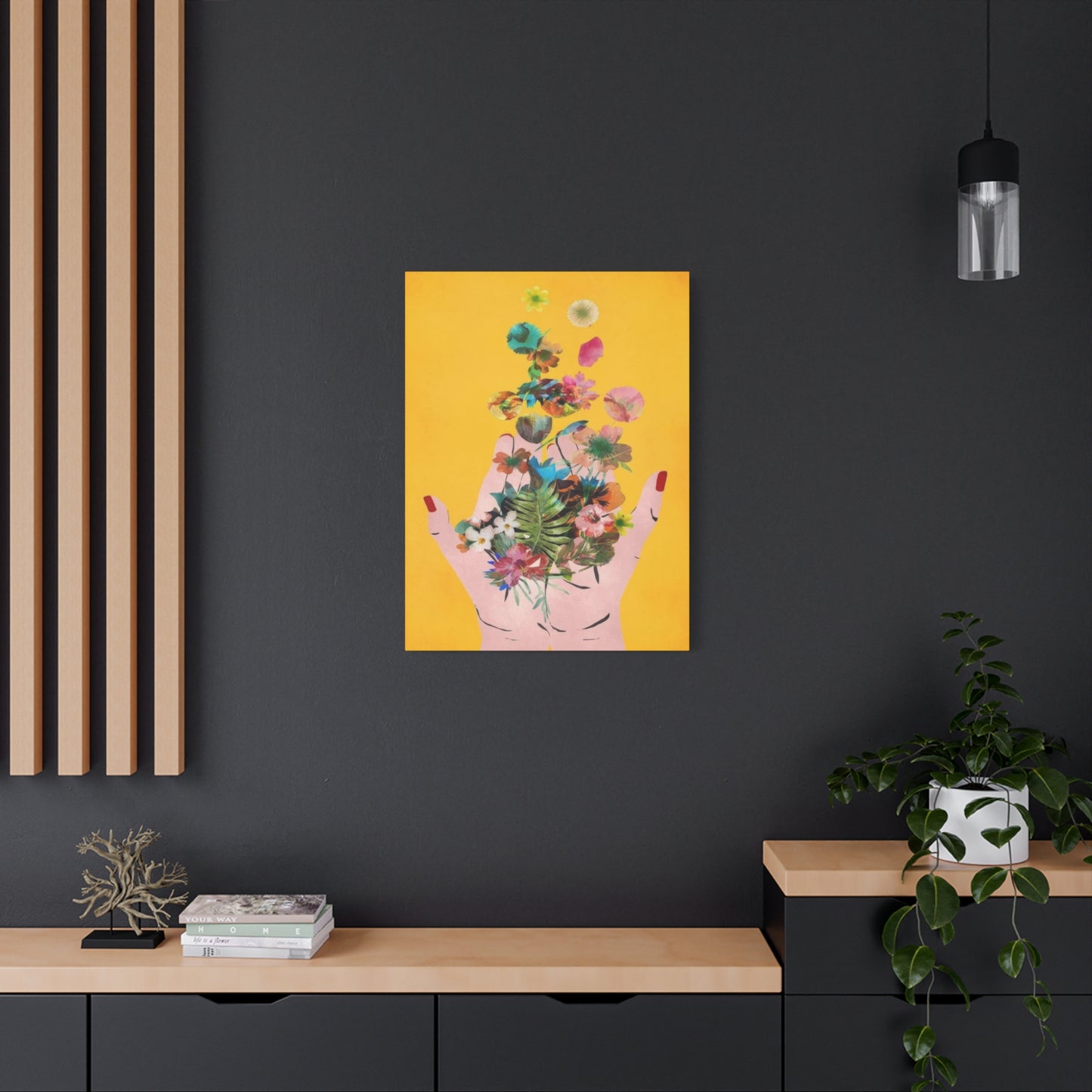

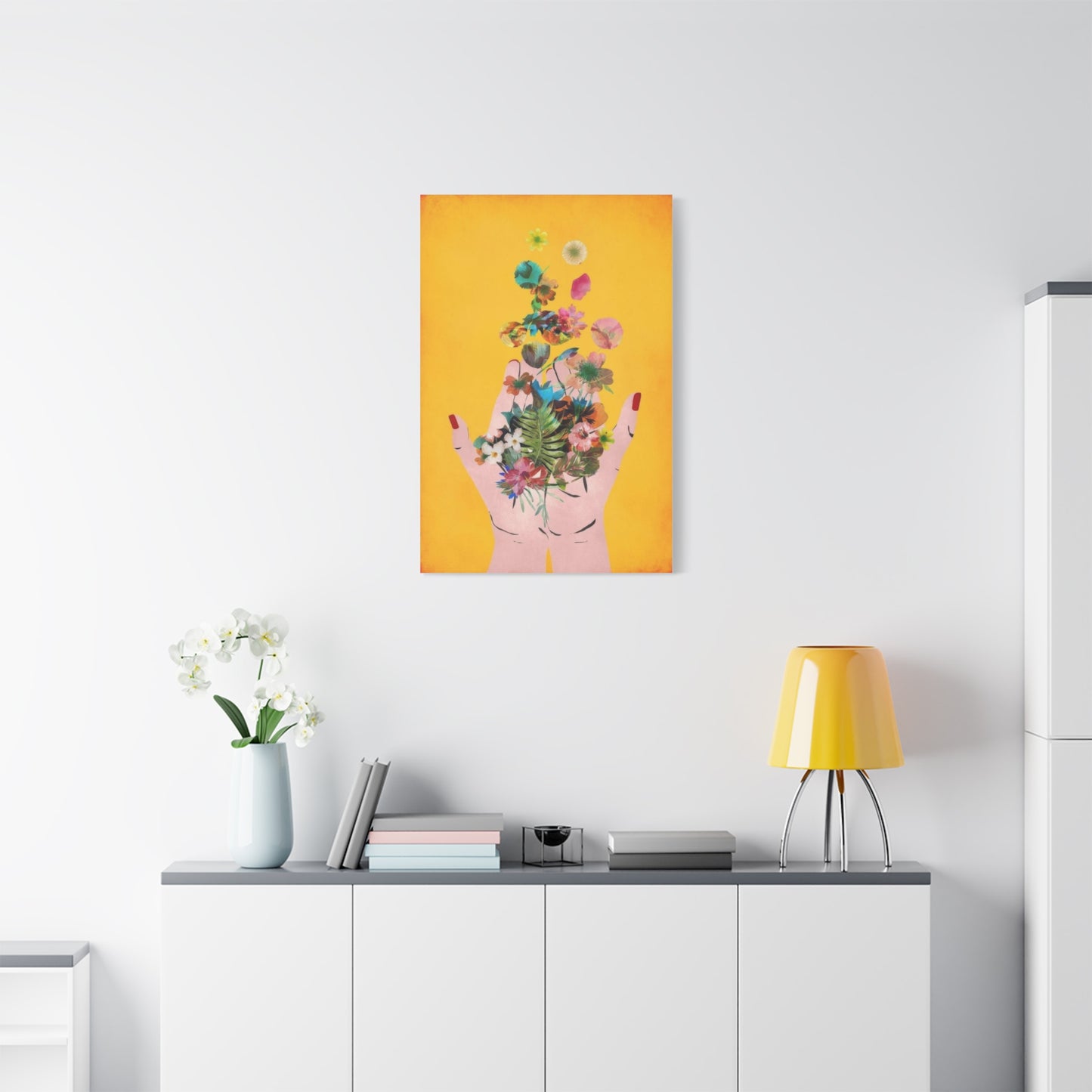
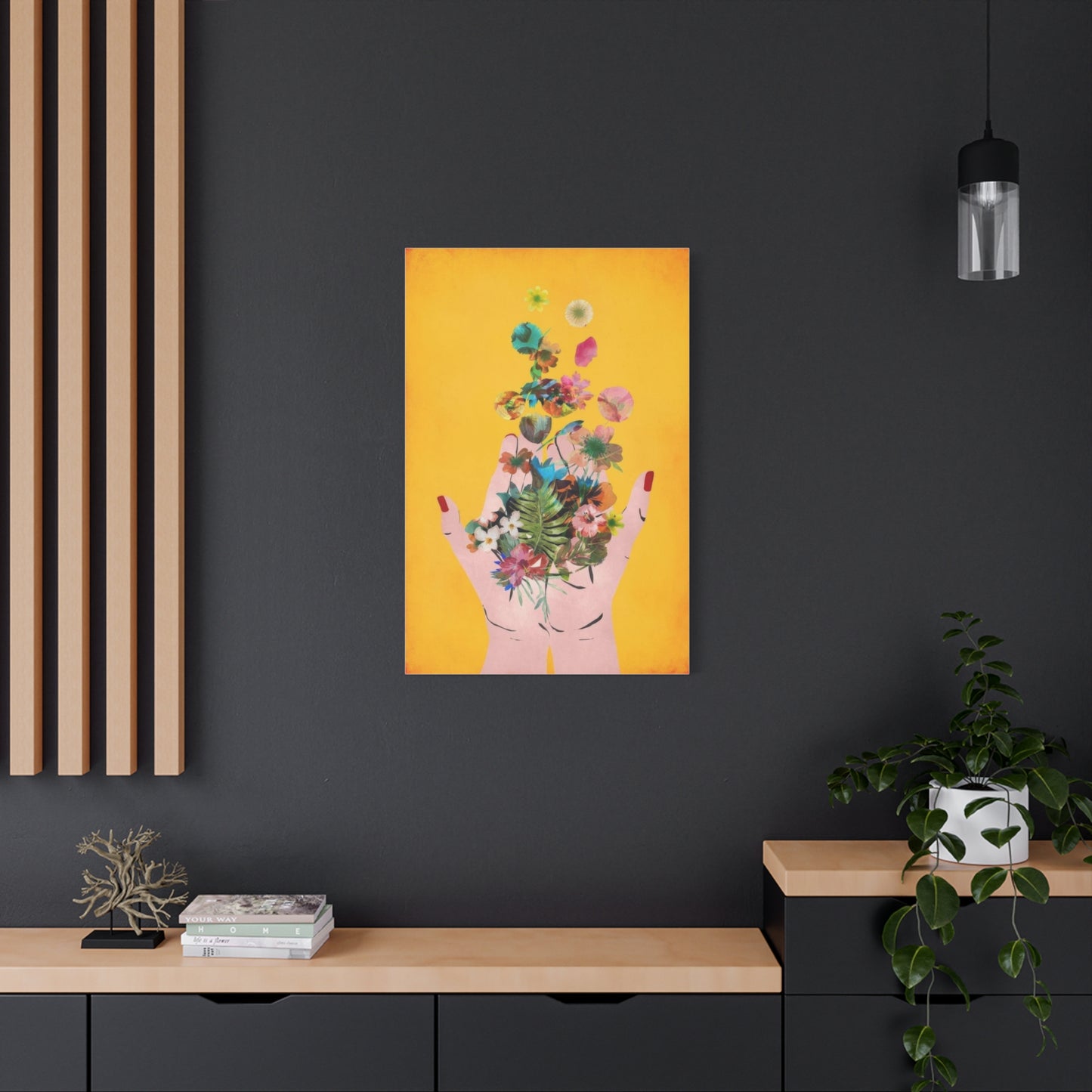
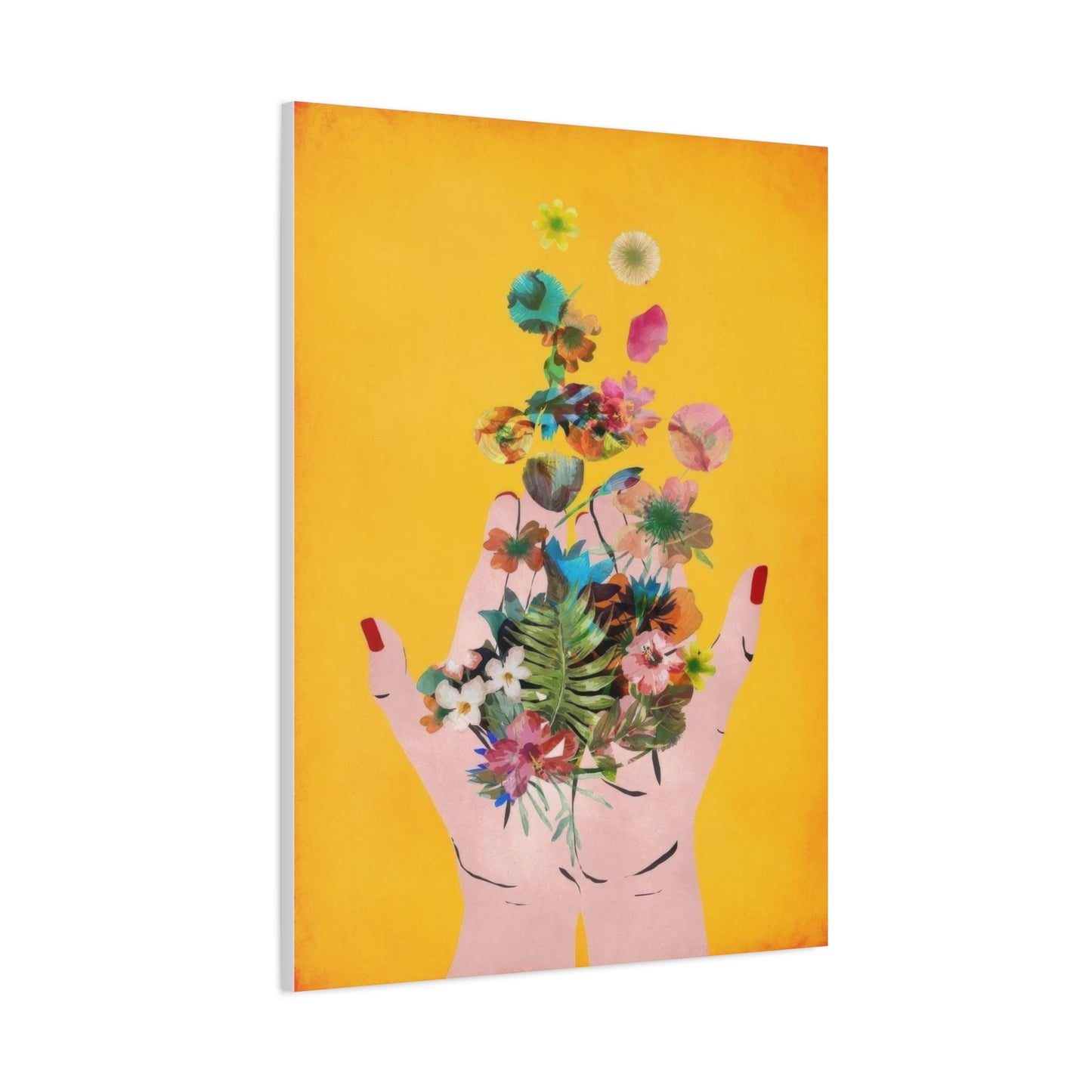
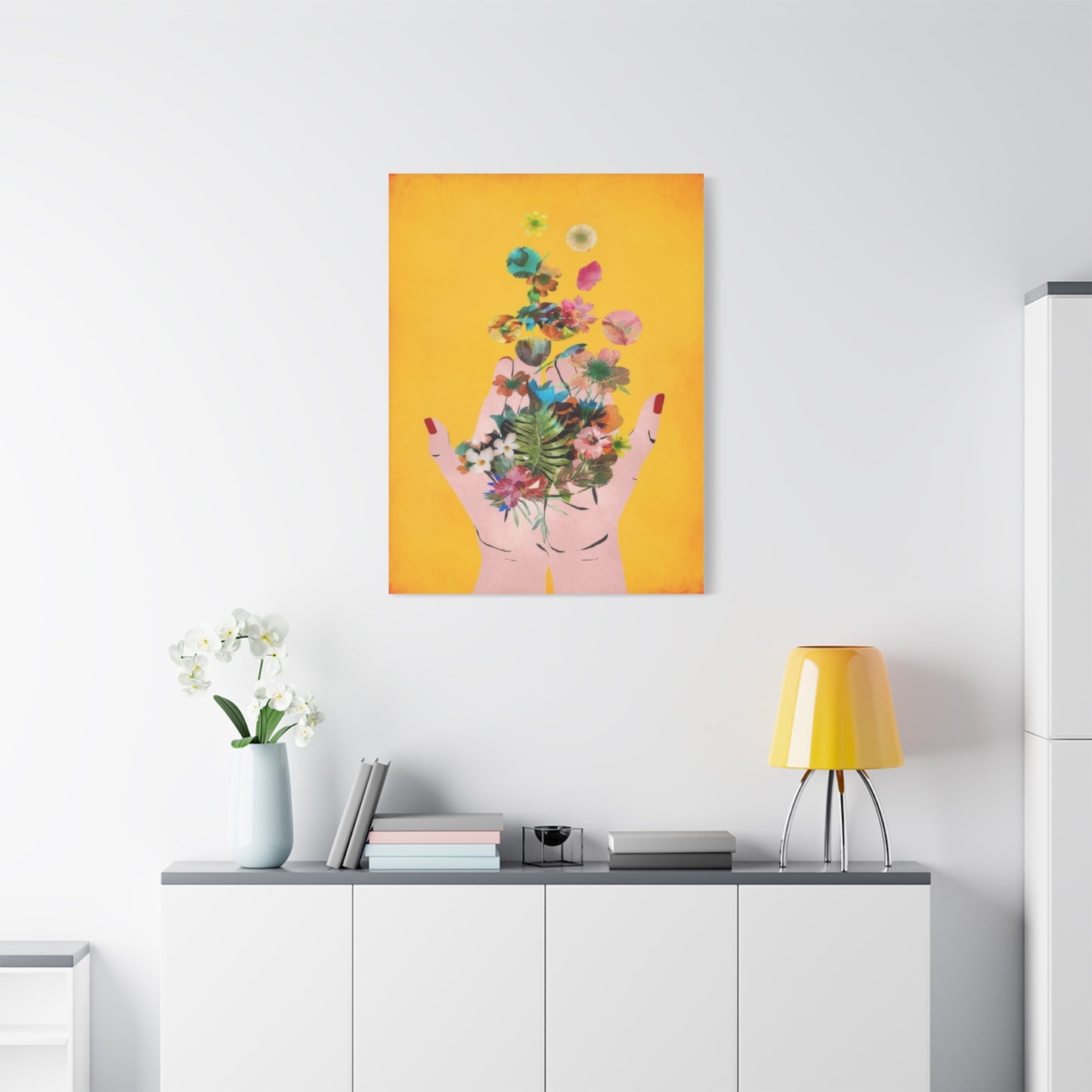

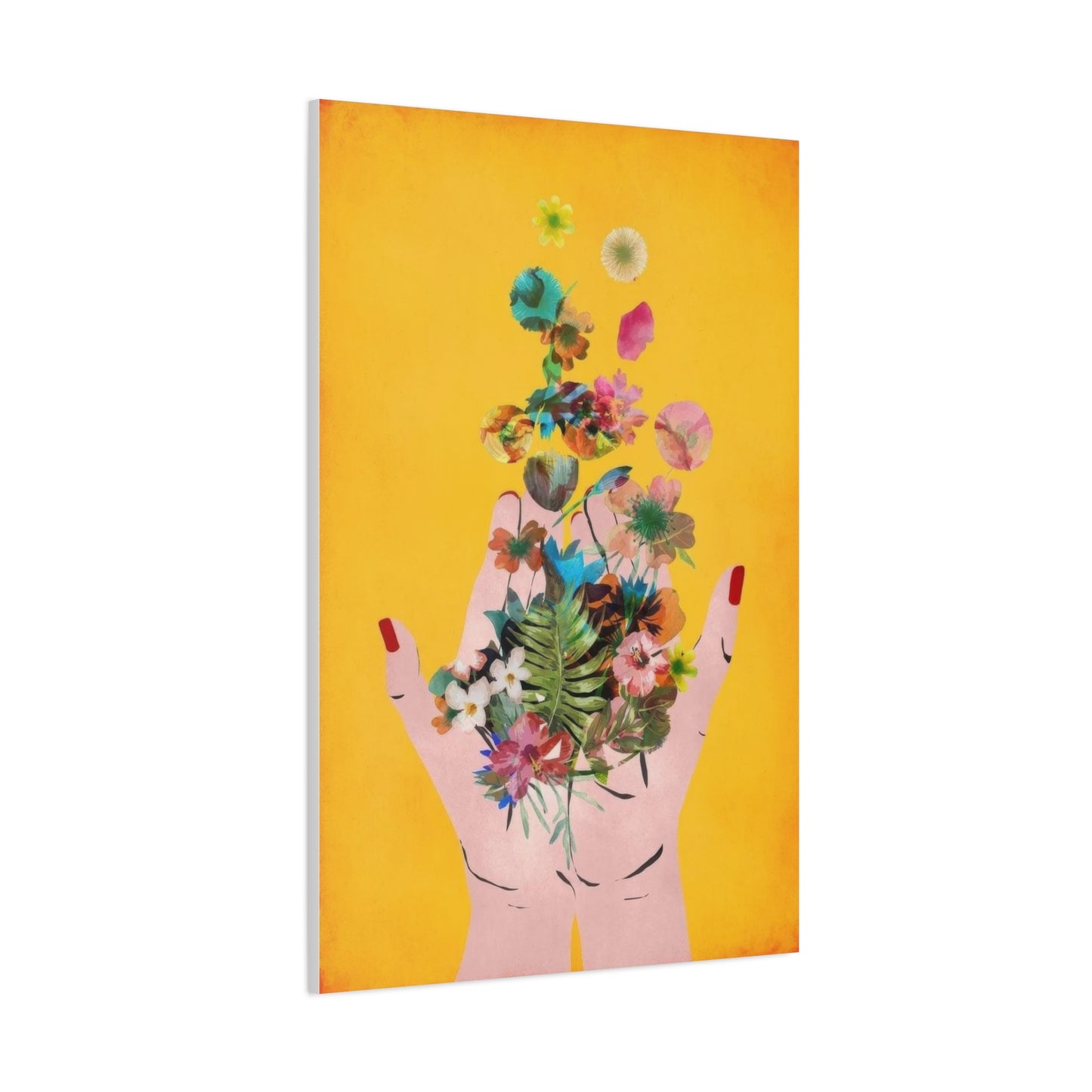
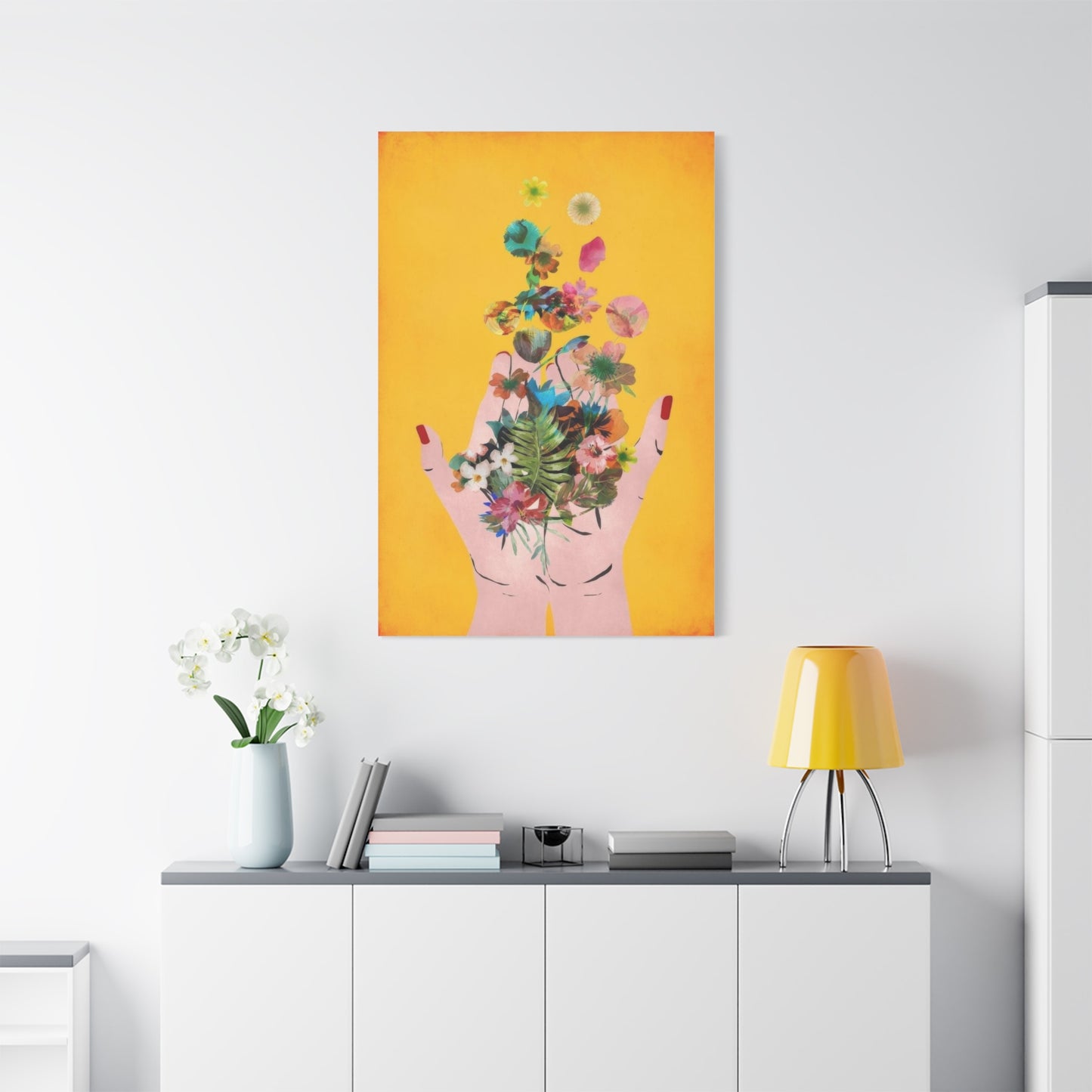
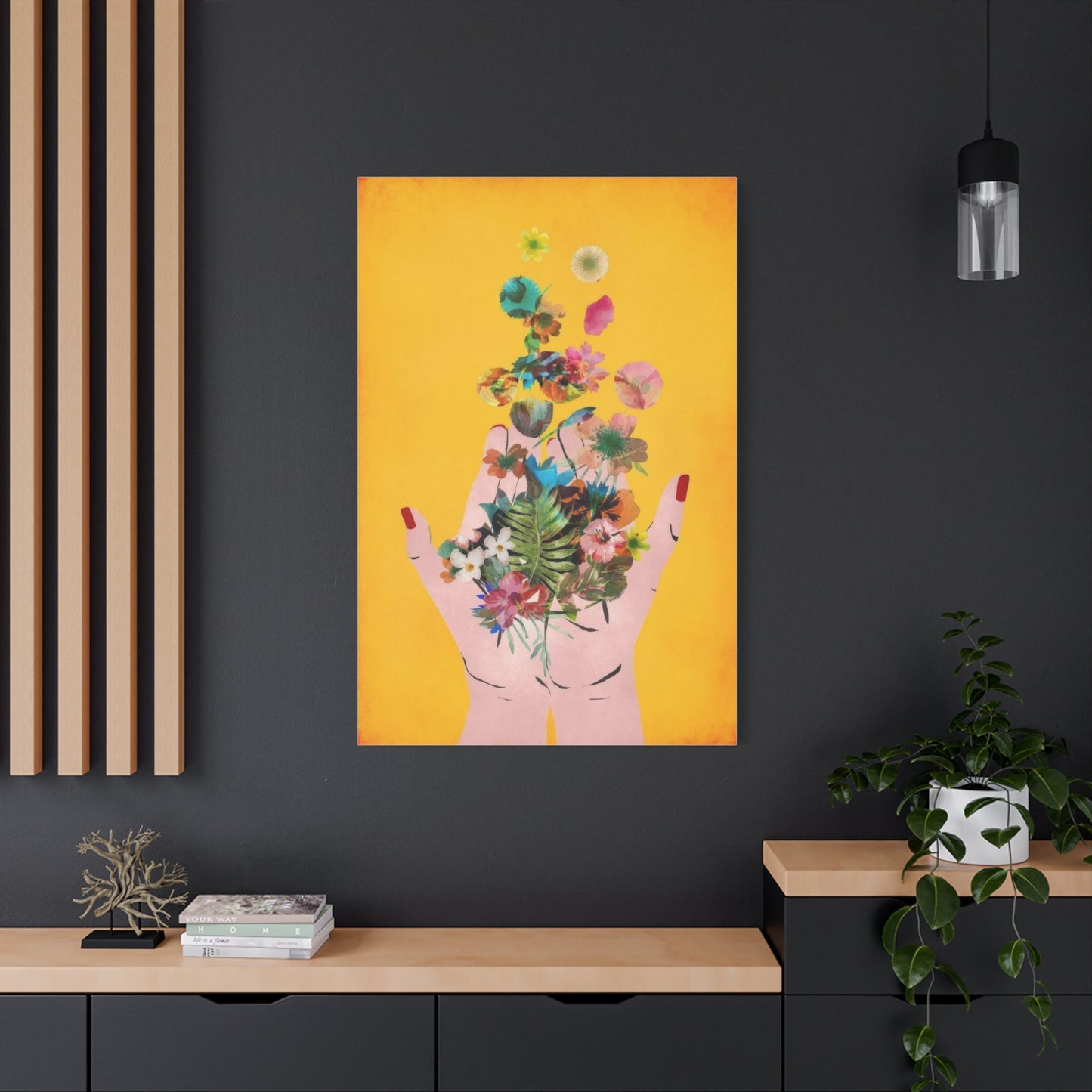
The Ultimate Guide to Blooming Palm Prints: Transform Your Space with Tropical Elegance
Blooming palm canvas prints have emerged as one of the most captivating and versatile decorating choices for homeowners and interior design enthusiasts seeking to infuse their living spaces with natural beauty and tranquil energy. These stunning visual representations of tropical flora capture the essence of paradise, bringing warmth, serenity, and a refreshing connection to nature directly into your home. Whether you're redesigning a single room or reimagining your entire living environment, incorporating these botanical artworks creates an immediate transformation that elevates both the aesthetic appeal and emotional atmosphere of any space.
The growing popularity of botanical wall decorations reflects a broader cultural shift toward biophilic design principles, where people increasingly recognize the profound psychological and emotional benefits of surrounding themselves with natural imagery. In our fast-paced, technology-driven world, these artistic representations of flourishing tropical vegetation serve as visual anchors that ground us, remind us of simpler pleasures, and create peaceful retreats within our own four walls. The gentle curves of palm fronds, the delicate blooms nestled among verdant leaves, and the inherent sense of movement captured in quality canvas artwork combine to produce decoration that transcends mere aesthetics, instead functioning as a daily source of calm and inspiration.
Throughout this comprehensive exploration, we'll delve deeply into the multifaceted world of tropical botanical canvas artwork, examining how these pieces transform ordinary rooms into extraordinary sanctuaries. From understanding the psychological impact of natural imagery to discovering practical placement strategies, styling tips, and design principles that maximize their visual impact, this guide provides everything you need to successfully incorporate these stunning pieces into your decorating scheme. Whether your personal style leans toward contemporary minimalism, coastal casual, bohemian eclecticism, or traditional elegance, you'll discover how these versatile artworks adapt beautifully to complement and enhance your existing decor while adding that special touch of tropical charm that makes a house feel like a true home.
The Enchanting Appeal of Tropical Botanical Canvas Artwork
The magnetic allure of tropical palm canvas prints extends far beyond simple decoration, tapping into deep-seated human connections with nature and our collective longing for peaceful, beautiful environments. These artworks capture the distinctive character of palm trees, which have long symbolized leisure, vacation, and escape from everyday pressures. When you hang a carefully selected piece featuring lush fronds and delicate blooms, you're not simply filling wall space; you're creating a visual gateway to warmer climates, sun-drenched beaches, and the carefree atmosphere of tropical destinations.
The artistic representation of blooming palms possesses a unique ability to evoke powerful emotional responses. The vertical lines of tree trunks create visual height and elegance, while the spreading canopy of leaves introduces organic curves and movement that soften hard architectural lines. When artists capture the moment of blooming, adding clusters of flowers or fruit among the foliage, they introduce additional layers of visual interest, color variation, and natural beauty that make these pieces endlessly engaging to observe. The interplay of light and shadow within the composition, the subtle gradations of green tones, and the textural details visible in quality reproductions all contribute to artwork that rewards repeated viewing.
Beyond their immediate visual appeal, these botanical artworks carry cultural and symbolic significance that adds depth to their decorative function. Throughout history and across diverse cultures, palm trees have represented victory, peace, eternal life, and fertility. In contemporary design contexts, they've become shorthand for relaxation, tropical luxury, and connection to paradise. By incorporating these symbols into your living space, you subtly communicate your values, aspirations, and personal aesthetic preferences. The presence of flourishing plant life, even in artistic form, creates subconscious associations with growth, vitality, and natural abundance that contribute to the overall emotional atmosphere of your home.
The technical aspects of canvas printing technology have evolved dramatically in recent years, allowing for unprecedented detail, color accuracy, and longevity in reproducing botanical imagery. Modern printing processes can capture the finest details of palm fronds, the delicate structure of blooms, and the subtle color variations that bring these images to life. High-quality canvas materials provide texture that adds dimension and visual interest, while protective coatings ensure that your investment maintains its beauty for years to come. This combination of artistic subject matter and advanced reproduction technology results in decorative pieces that rival the impact of original paintings at a fraction of the cost.
The Soothing Influence of Natural Palm Imagery on Interior Spaces
Scientific research increasingly supports what many people instinctively know: surrounding ourselves with representations of nature profoundly impacts our mental and emotional wellbeing. Botanical artwork, particularly pieces featuring lush, thriving plant life like blooming palms, creates measurable effects on stress levels, mood, and overall sense of comfort within a space. When you incorporate these natural elements into your decorating scheme, you're not just making an aesthetic choice; you're actively designing an environment that supports psychological health and emotional balance.
The calming effect of green tones, which dominate most palm tree imagery, stems from both evolutionary biology and psychological conditioning. Throughout human evolution, lush green vegetation signaled the presence of water, food, and safe habitat. Our brains remain wired to respond positively to these visual cues, experiencing subtle relaxation and comfort when we perceive verdant plant life, even in artistic representation. The specific shade variations found in palm foliage, ranging from deep forest greens to bright lime tones, create visual complexity that engages the eye without overwhelming the senses, producing a balanced, harmonious viewing experience.
Beyond color psychology, the organic forms present in palm tree artwork contribute significantly to their relaxing influence. Unlike the rigid geometric shapes that dominate most built environments, the flowing curves of palm fronds, the irregular patterns of leaf arrangements, and the natural asymmetry of blooming clusters introduce visual elements that our brains process differently. These organic forms require less cognitive effort to interpret, allowing for a more relaxed, contemplative viewing experience. The gentle movement suggested by curved fronds creates a sense of flow and rhythm that subtly influences how we experience and move through the space.
The concept of visual breathing room plays a crucial role in how tropical botanical artwork enhances relaxation. In rooms filled with furniture, electronics, and everyday clutter, a well-placed canvas featuring open sky, spreading palm fronds, and uncluttered natural composition provides a visual resting place where the eye can relax. This negative space within the artwork, combined with the upward reach of palm trees, creates a sense of expansiveness that counteracts feelings of confinement or crowding. Even in smaller rooms, the right piece can create an illusion of greater space and airiness, contributing to a more comfortable, less cramped atmosphere.
The seasonal consistency of palm imagery offers another psychological benefit worth considering. Unlike deciduous trees that cycle through dramatic seasonal changes, palms maintain their verdant appearance year-round in their natural habitats. Artwork featuring these evergreen trees provides visual stability and continuity regardless of the season outside your windows. During long, grey winters, this persistent reminder of eternal summer can combat seasonal mood changes, while in warmer months, it reinforces and celebrates the outdoor environment. This temporal consistency creates a dependable visual anchor that contributes to a sense of stability and permanence in your living space.
Designing Your Personal Sanctuary with Tropical Canvas Artwork
Creating a genuine oasis within your home requires more than simply hanging artwork; it demands thoughtful consideration of how individual pieces interact with architectural features, existing furnishings, and the overall energy you wish to cultivate. Tropical palm canvas prints serve as foundational elements in this design process, establishing the thematic direction and emotional tone that subsequent decorating decisions can build upon and enhance.
The selection process begins with honest assessment of your space and clear visualization of your desired outcome. Consider the natural light patterns in the room throughout the day, as these will dramatically affect how colors and details appear in your chosen artwork. Morning light tends toward cooler tones that can make blues and greens appear more vibrant, while afternoon and evening light adds warmth that enhances golden and peachy tones. A piece featuring blooming palms against a blue sky will present differently depending on when and how natural light illuminates it, so timing your selection process to view options during various daylight conditions helps ensure satisfaction with your choice.
Scale represents one of the most critical yet frequently overlooked aspects of successful art placement. A common mistake involves selecting pieces that are too small for the wall space or furniture they're meant to anchor. As a general guideline, artwork hanging above furniture should span roughly two-thirds to three-quarters of the furniture width. For standalone wall placement, consider the entire wall section rather than focusing narrowly on the area directly where the piece will hang. Larger scale artwork makes bolder statements and creates more dramatic focal points, while smaller pieces work better in groupings or as accents within gallery wall arrangements. When creating your calm retreat, don't be timid about scale; properly proportioned artwork makes rooms feel intentionally designed rather than arbitrarily decorated.
Layering elements around your central botanical artwork builds depth and reinforces the oasis theme. This doesn't mean overwhelming the space with tropical kitsch; instead, it involves carefully selecting complementary elements that echo the natural themes without redundancy. Natural fiber textures in throw pillows, area rugs, or window treatments pick up on the organic quality of the palm imagery. Actual potted plants, whether tropical varieties or other greenery, create dialogue between the artistic representation and living nature. Metal accents in warm tones like brass or copper can evoke sunset light filtering through palm fronds, while cool metallics like pewter or silver might echo overcast skies or beach atmosphere.
Color palette cohesion determines whether your oasis feels harmonious or chaotic. Extract three to five colors from your chosen artwork to use as a guiding palette for the surrounding space. If your canvas features palms against a coral-tinted sunset sky, that peachy tone might appear in throw pillows or a cozy blanket. The various greens in the foliage could influence plant pot colors or accent furniture finishes. Sandy beiges or soft whites suggested by clouds or beach elements provide neutral grounding tones for walls or larger furniture pieces. This approach creates visual continuity that makes the artwork feel integrated into the space rather than arbitrarily placed, strengthening the overall cohesive oasis atmosphere you're working to achieve.
The sensory experience of your created oasis extends beyond visual elements. Consider how other senses can reinforce the tropical paradise theme. Subtle ambient sounds like gentle wind chimes, water features, or curated playlists featuring ocean waves or tropical rainfall enhance the immersive quality of your space. Natural fragrances from candles, diffusers, or fresh flowers introduce another layer of sensory reinforcement. Even tactile elements, like the smooth coolness of rattan furniture or the soft plushness of a high-quality area rug, contribute to the overall experience. When multiple senses receive complementary inputs that align with your visual theme, the result is a truly transformative environment that provides genuine escape and rejuvenation.
Bridging Indoor and Outdoor Environments Through Botanical Canvas Art
One of the most valuable functions of tropical palm canvas prints involves their remarkable ability to dissolve the psychological boundary between interior spaces and the natural world beyond your walls. This connection, which designers term bringing the outdoors in, creates living environments that feel more spacious, healthier, and more closely aligned with human biological needs that evolved in natural settings rather than constructed ones.
The visual continuity created by botanical artwork serves as a bridge between climate-controlled interiors and whatever weather conditions prevail outside. On dreary, rainy days, a vibrant canvas featuring sun-drenched palm trees maintains connection to brighter possibilities and reminds us that fair weather exists somewhere. During harsh winters, these tropical scenes provide psychological warmth and hope for coming spring. Even during beautiful weather, the artwork reinforces our connection to outdoor beauty, serving as a reminder to appreciate and engage with the natural world. This year-round connection to nature, even in symbolic form, contributes to better mental health outcomes and reduced feelings of isolation or disconnection.
Strategic placement near windows or glass doors maximizes the bridging effect of tropical canvas artwork. When positioned where natural light illuminates the piece, particularly if that light filters through actual outdoor foliage, the artwork becomes part of a larger visual composition that includes both the artistic representation and the genuine natural elements visible through the glass. This layering of real and represented nature creates depth and complexity that enriches the viewing experience. The eye travels naturally from indoor artwork to outdoor views and back again, creating a visual flow that makes spaces feel more open and less compartmentalized.
The biophilic design movement, which explicitly focuses on incorporating natural elements into built environments, provides theoretical framework for understanding why bringing outdoor imagery inside produces such positive results. Human beings possess innate biological connections to natural settings, evolutionary adaptations that helped our ancestors survive and thrive. Modern life often disconnects us from these natural environments, creating what some researchers term nature deficit disorder, a condition associated with stress, anxiety, and various health problems. While no substitute for actual time spent outdoors, incorporating natural imagery through quality botanical artwork helps mitigate this disconnection, providing daily visual contact with natural forms, colors, and compositions.
The specific choice of blooming palm imagery holds particular significance in creating this indoor-outdoor bridge. Palm trees exist in that interesting category of plants that many people associate with outdoor leisure and vacation experiences but rarely encounter in their daily lives unless they live in tropical or subtropical regions. This exotic quality means the artwork introduces elements from beyond immediate surroundings, expanding the perceptual boundaries of your space to encompass distant locations and experiences. Rather than simply reflecting your immediate outdoor environment, the piece transports you to entirely different climates and geographies, making your interior space feel connected not just to your backyard but to the wider natural world.
Seasonal transitions provide excellent opportunities to appreciate how indoor botanical artwork stabilizes and enriches your relationship with the changing outdoor environment. As autumn leaves fall and gardens enter dormancy, the persistent green vitality of palm canvas prints maintains visual connection to living nature. When spring arrives and outdoor plants burst into new growth, the blooming elements in your artwork harmonize with and celebrate this renewal. Summer's intensity finds echo in the sun-bright compositions of well-chosen tropical pieces, while winter's starkness creates contrast that makes the lush artwork feel even more precious and appreciated. This responsive relationship to seasonal change, with your artwork providing continuity through all transitions, deepens your engagement with natural cycles and rhythms.
Perfect Harmony Between Coastal Design and Tropical Botanical Artwork
Coastal decorating schemes and tropical palm canvas prints form a natural partnership that creates cohesive, relaxing spaces imbued with vacation atmosphere and breezy elegance. The shared color palettes, thematic elements, and emotional tones of these design approaches complement each other seamlessly, allowing you to build layered, sophisticated interiors that feel both casually comfortable and thoughtfully composed.
The color foundation of coastal design typically includes soft neutrals, various blue tones, sandy beiges, and crisp whites, all of which harmonize beautifully with the greens, blues, and earth tones present in quality palm tree artwork. This natural color compatibility means you can introduce tropical botanical pieces without disrupting your existing coastal palette. The artwork's greens add vital energy to what might otherwise become a cool, potentially sterile color scheme, while the blues in sky or water elements within the composition reinforce your established coastal tones. The result is a richer, more complete color story that maintains coastal freshness while adding depth and visual interest.
Thematic resonance between coastal and tropical design elements creates opportunities for creative layering without redundancy. Both approaches celebrate natural beauty, outdoor living, and relaxed lifestyles, but they emphasize different aspects of these shared themes. Coastal design often focuses on ocean, beach, and nautical elements, while tropical styling highlights lush vegetation, exotic flowers, and rainforest or island imagery. When combined thoughtfully, these complementary themes create richer narratives about place and lifestyle. Your blooming palm canvas might hang above a console table displaying collected shells and coral, bringing together beach and jungle, ocean and forest, in a composition that suggests the complete coastal tropical environment where both ecosystems meet.
The textural language of coastal interiors provides an excellent foundation for incorporating botanical canvas artwork. Natural materials like weathered wood, woven seagrass, linen fabrics, and rope details all speak to handcrafted, organic origins that align perfectly with the natural subject matter of palm tree imagery. The texture visible in canvas itself, with its subtle weave and dimensional surface, reinforces these tactile qualities. When you place tropical botanical artwork within a room featuring these coastal textures, every element reinforces the others, creating a multisensory experience that feels authentic and complete rather than superficial or theme-park obvious.
Furniture styles common in coastal decorating adapt beautifully to accompany tropical canvas prints. Light-finished woods, whitewashed or bleached pieces, and furniture with clean lines and casual silhouettes all work harmoniously with botanical artwork. Wicker, rattan, and bamboo furnishings, which bridge coastal and tropical styling, create particularly strong visual connections with palm imagery. These natural materials echo the organic forms in the artwork while their light, airy construction maintains the open, breezy atmosphere essential to successful coastal design. Even contemporary coastal furniture with sleeker profiles and more modern sensibilities pairs effectively with the right tropical artwork, as the natural subject matter softens any industrial qualities while the clean composition of quality pieces prevents the space from feeling overly rustic or casual.
The lifestyle implications of coastal design philosophy align perfectly with the emotional tone of tropical palm artwork. Both approaches prioritize relaxation, connection to nature, and escape from formal conventions. This shared emphasis on casual comfort and stress reduction means that decorating choices in either category naturally support each other in creating the desired atmosphere. When guests enter a room that combines coastal furnishings with tropical botanical artwork, they immediately understand the space as an invitation to relax, unwind, and temporarily set aside the pressures of busy modern life. This clear communication of purpose and mood represents successful interior design, where aesthetic choices work together to support the intended function and feeling of the space.
Achieving Dramatic Transformation Through Strategic Art Placement
The transformative power of well-selected tropical palm canvas prints extends beyond their individual beauty to encompass their ability to completely redefine how a space looks, feels, and functions. This dramatic impact stems from understanding and implementing key design principles that maximize the artwork's visual influence while ensuring it integrates harmoniously with other room elements.
Creating a strong focal point stands as one of the primary functions of statement artwork in any room. The human eye naturally seeks a place to rest when scanning a space, and without a clear focal point, rooms can feel aimless or unsettled. A substantial canvas featuring striking palm imagery immediately provides this visual anchor, giving the eye a destination and creating organization within the overall composition of the room. This effect proves particularly valuable in open-concept spaces where traditional architectural features like fireplaces or large windows might not exist to provide natural focal points. By establishing this visual hierarchy, you create structure and intentionality that makes spaces feel designed rather than simply furnished.
The principle of negative space plays a crucial role in maximizing the impact of your tropical artwork. Resist the temptation to crowd the area around your canvas with additional decorations, excessive furniture, or competing visual elements. Instead, allow generous breathing room that gives the piece prominence and lets its composition, colors, and details shine without distraction. This doesn't mean creating stark, empty expanses; rather, it involves thoughtful editing that ensures each element in the space serves a clear purpose and contributes to the overall design without creating visual noise. The discipline of restraint often separates adequate decorating from truly excellent interior design.
Height and positioning significantly affect how artwork influences a space. The standard guideline of hanging pieces so their center point sits at roughly eye level, approximately sixty inches from the floor, provides a useful starting point but shouldn't become an inflexible rule. Consider how people typically interact with different rooms. In dining areas where people are usually seated, slightly lower placement might be appropriate. In hallways where people pass through standing, standard height works well. In bedrooms where artwork is often viewed while reclining in bed, positioning that accounts for this lower sightline creates better engagement with the piece. The goal involves placing artwork where it will be naturally noticed and appreciated in the context of the room's actual use.
Lighting dramatically affects how colors, details, and the overall composition of canvas artwork present themselves. Natural light provides the most accurate color representation and changes throughout the day, creating a dynamic relationship with the artwork that keeps it feeling fresh and interesting. However, natural light can also cause fading over time, so consider using UV-protective glass or placing particularly valuable pieces away from direct sun exposure. Artificial lighting offers opportunities to create dramatic effects and ensure the artwork remains visible during evening hours. Picture lights, adjustable spotlights, or strategically placed lamps can highlight your botanical canvas while creating ambiance throughout the room. Experiment with different lighting angles and intensities to discover which approach best showcases your specific piece.
The concept of visual weight distribution affects how balanced and harmonious a room feels. Large, dark, or visually complex elements create more visual weight than small, light, or simple ones. When you introduce a substantial tropical canvas print, you're adding significant visual weight to that area, which needs to be balanced by other elements in the space. This doesn't mean creating perfect symmetry; in fact, asymmetrical balance often produces more dynamic, interesting results. Consider distributing visual weight through furniture placement, additional artwork or decorative items on other walls, or even the introduction of large plants or substantial lamps that create counterbalancing focal points. The goal is achieving overall equilibrium where no single area overwhelms the space while the room feels cohesive and intentionally composed.
Paradise Within Reach: Making Your Home a Tropical Haven
The aspiration to create a personal paradise within your living space represents more than simple decorating ambition; it reflects a deeper desire for sanctuary, beauty, and emotional nourishment in the place where you spend the majority of your private time. Tropical palm canvas prints serve as accessible, practical tools for realizing this aspiration, offering visual impact and atmospheric transformation without the complexity or expense of major renovation projects.
The psychological concept of environmental control plays a significant role in understanding why creating your ideal living space matters so profoundly. In many aspects of modern life, we have limited control over our surroundings, circumstances, or daily experiences. Our homes represent one arena where we maintain significant autonomy over aesthetic choices, functional arrangements, and the overall character of our environment. Exercising this control thoughtfully, creating spaces that reflect our values and support our wellbeing, contributes to feelings of agency and self-determination that enhance overall life satisfaction. When you deliberately introduce tropical imagery that evokes paradise, you're not indulging in superficial decoration; you're actively shaping your environment to support your psychological and emotional needs.
The accessibility of canvas artwork democratizes the ability to create beautiful, personalized spaces. While original paintings or high-end custom pieces remain financially out of reach for many people, quality canvas prints offer similar visual impact at a fraction of the cost. This accessibility means that creating your ideal environment doesn't require waiting until you can afford expensive artwork or delaying satisfaction until circumstances change. You can begin building your personal paradise immediately, making incremental improvements that collectively transform your space from merely functional to genuinely nurturing and inspiring. This immediate actionability represents a significant advantage over decoration approaches that require substantial financial investment or professional assistance.
The flexibility of canvas artwork allows for experimentation and evolution as your tastes, needs, and life circumstances change. Unlike permanent design elements such as flooring, cabinetry, or architectural features, artwork can be easily relocated, replaced, or reconfigured to accommodate changing preferences or new furniture arrangements. This adaptability means you can try different approaches without fear of costly mistakes or long-term commitment to choices that might not work out. As you gain experience and confidence in your decorating abilities, you can refine your selections, try bolder choices, or simply refresh your space to maintain interest and engagement with your surroundings.
The storytelling potential of botanical artwork adds another dimension to its role in creating paradise within your home. Every piece can represent something meaningful: a memorable vacation, an aspirational destination, a reminder of heritage or family history, or simply a commitment to prioritizing beauty and nature in daily life. When artwork carries personal significance beyond its aesthetic qualities, it becomes more than decoration; it transforms into a daily reminder of what matters to you, a visual affirmation of your values and priorities. This deeper meaning enriches your experience of your space, creating emotional resonance that purely decorative objects cannot provide.
The cumulative effect of multiple intentional decorating choices creates synergy where the whole exceeds the sum of individual parts. Your tropical canvas print combines with complementary colors, supportive textures, appropriate lighting, and thoughtful furniture arrangement to produce an integrated environment that consistently delivers the paradise experience you're seeking. Each element reinforces the others, building toward a comprehensive atmosphere that envelops you the moment you enter the space. This holistic approach to creating your ideal environment demonstrates the fundamental principle of successful interior design: individual beautiful objects matter less than how all elements work together to create the desired experience and emotional impact.
Cultivating Tranquility Through Thoughtful Botanical Art Selection
The pursuit of serenity within our living spaces has never been more relevant than in our current era of constant connectivity, information overload, and persistent stress. Tropical palm canvas prints specifically selected and positioned to promote tranquility offer tangible tools for counteracting these pressures, creating dedicated spaces where calm prevails and restoration becomes possible.
The composition and style of artwork significantly impact its capacity to generate peaceful atmosphere. Pieces featuring balanced, symmetrical arrangements generally read as more calm and stable than those with dramatic asymmetry or diagonal thrust. Soft, gradual tonal transitions create gentler visual experiences than high-contrast compositions with sharp value changes. Horizontal orientations tend toward peaceful, restful qualities, while vertical formats energize and activate. Understanding these visual principles allows you to select pieces whose formal qualities support your tranquility goals. For maximum serene impact, seek artwork featuring gently swaying palms with smooth tonal gradations, balanced composition, and horizontal orientation that suggests stillness and repose.
Color temperature profoundly influences emotional response to artwork. Cool colors, particularly soft blues, gentle greens, and lavender tones, generally promote calm and lower perceived temperature in a space, making them excellent choices for creating serene atmospheres. Warm colors like reds, oranges, and hot yellows tend to energize and activate, potentially working against tranquility goals. When selecting tropical palm artwork for peaceful spaces, favor pieces where cooler tones dominate, with any warm accents appearing as subtle touches rather than primary colors. The psychological impact of these cooler palettes combines with the natural subject matter to create powerfully calming visual experiences.
The level of visual complexity in artwork affects how restful or stimulating it feels. Extremely detailed, busy compositions with numerous competing elements require significant cognitive processing, potentially creating mental stimulation that conflicts with relaxation goals. Conversely, very simple compositions might lack sufficient interest to hold attention and create engagement. The ideal middle ground features enough detail and complexity to reward contemplation without overwhelming the viewer. Look for palm artwork that balances clear focal points with supporting elements, offering visual interest that unfolds gradually rather than demanding immediate attention to multiple simultaneous elements.
The integration of water elements within tropical canvas prints enhances their tranquility-promoting properties. Imagery that incorporates ocean views, reflecting pools, or even implied moisture through atmosphere and light quality adds another layer of peaceful association. Water has long held symbolic connections to emotional flow, cleansing, and renewal across diverse cultures, and these symbolic associations operate subconsciously when we view water imagery. Additionally, many people have direct positive memories associated with water, whether ocean beaches, quiet lakes, or tropical waterfalls. Artwork that incorporates these elements alongside palm trees creates multi-layered peaceful imagery that engages both universal psychological responses and personal positive associations.
The practice of intentional viewing transforms artwork from passive decoration into active tool for cultivating tranquility. Rather than simply hanging a piece and forgetting about it, consider incorporating brief moments of focused attention into your daily routine. Spend a few minutes really looking at the artwork, noticing details you might have overlooked, appreciating color relationships, or simply allowing your mind to wander into the scene depicted. This practice, similar to meditation techniques, provides mental reset moments that interrupt stress patterns and promote present-moment awareness. When you select artwork specifically to support this practice, choosing pieces with sufficient depth and interest to sustain repeated viewing, you create opportunities for these tranquility-building micro-retreats throughout your day.
Elevating Everyday Living Through Artistic Enhancement
The relationship between art and quality of life extends beyond simple beautification to encompass profound effects on how we experience our daily routines, perceive our surroundings, and feel about the spaces where we spend our time. Tropical palm canvas prints, when thoughtfully selected and properly displayed, function as powerful tools for elevating ordinary living spaces into environments that actively enhance daily experience and contribute to greater life satisfaction.
The concept of aesthetic nutrition, though not scientifically formalized, captures an important truth about human needs. Just as we require physical nutrition to maintain bodily health, we need aesthetic nourishment to maintain psychological wellbeing. Visual beauty, particularly representations of nature, feeds something fundamental in human consciousness, satisfying needs that persist regardless of practical circumstances or material comfort. Quality artwork serves this nutritive function, providing regular doses of visual pleasure, emotional resonance, and mental stimulation. When you invest in meaningful pieces that genuinely speak to you, you're not indulging in luxury; you're attending to legitimate psychological needs that affect overall wellbeing and life satisfaction.
The daily interaction with beautiful objects creates cumulative positive effects that compound over time. While a single viewing of artwork might produce momentary pleasure, living with pieces you genuinely love means experiencing that pleasure repeatedly, building positive associations with your space and establishing baseline contentment that pervades daily life. This differs significantly from special occasion experiences or occasional treats; the constant presence of beauty in your immediate environment creates persistent positive influence that subtly but substantially improves your daily emotional landscape. The investment in quality botanical artwork thus represents not a one-time purchase but an ongoing contribution to your quality of life.
The demonstration of personal style through decorating choices communicates important information both to yourself and to others who enter your space. When you select distinctive tropical palm artwork that reflects your aesthetic preferences, you're making visible statements about who you are, what you value, and how you want to live. This self-expression function of decoration satisfies deep psychological needs for identity formation and personal authenticity. Moreover, creating a space that genuinely reflects your taste and preferences rather than following generic trends or accepting default choices demonstrates self-respect and commitment to living intentionally. These may seem like abstract concerns, but they contribute meaningfully to feelings of authenticity and alignment between your internal values and external circumstances.
The social dimension of decorating with distinctive artwork adds another layer of value. Beautiful spaces become sources of pride that you genuinely enjoy sharing with friends and family. Memorable artwork provides conversation starters that facilitate social connection and allow you to share your interests, experiences, and aesthetic perspectives with guests. When visitors compliment your space or express genuine interest in your decorating choices, these interactions reinforce social bonds and contribute to feelings of competence and social integration. The investment in quality pieces that make your space welcoming and distinctive thus supports not only your personal enjoyment but also your social relationships and sense of connection to community.
The aspirational quality of thoughtfully decorated spaces motivates continued improvement and refinement of your environment. When you take initial steps toward creating your ideal space, those changes often inspire further enhancements as you begin to envision additional possibilities and develop greater confidence in your decorating abilities. Each successful addition, whether artwork, furniture, or accessories, builds momentum toward more comprehensive transformation. This progressive improvement process creates ongoing engagement with your space, preventing the stagnation that occurs when environments remain unchanged for extended periods. The result is living spaces that evolve with you, continuously reflecting your current taste, needs, and life circumstances rather than becoming frozen snapshots of previous life stages.
Understanding the Rich Symbolism of Tropical Palms in Visual Art
The representation of palm trees in artwork carries layered meanings that extend far beyond simple botanical documentation, connecting to deep cultural traditions, universal human experiences, and archetypal symbols that operate on both conscious and unconscious levels. Understanding this symbolic dimension enriches your experience of tropical canvas prints and allows for more intentional selection of pieces whose meanings resonate with your personal values and aspirations.
Throughout history, palm trees have symbolized victory, triumph, and overcoming challenges across diverse cultures. Ancient Romans awarded palm fronds to victorious athletes and military leaders, a practice that established associations between palms and achievement that persist in contemporary symbolism. This victory symbolism appears in religious art, civic monuments, and heraldic designs across centuries and continents. When you incorporate palm imagery into your personal space, you subtly invoke this tradition of triumph and success, creating environmental reminders that reinforce positive, achievement-oriented mindsets. This symbolic dimension operates whether or not you consciously recognize it, contributing to the overall energy and atmosphere of your space.
Palm trees also carry strong associations with paradise, eternity, and the concept of an idealized existence free from suffering or hardship. Biblical references to palm branches, their presence in Islamic descriptions of paradise, and their prominent role in various creation myths establish palms as markers of sacred, perfect spaces set apart from ordinary reality. When depicted in artwork, particularly in lush, thriving conditions with blooms indicating fertility and abundance, these trees evoke these paradisiacal associations, transforming ordinary rooms into symbolic gateways toward ideal existence. This dimension of meaning operates powerfully even for secular individuals with no religious commitments, as the archetypes of paradise and perfect existence transcend specific belief systems.
The tropical specificity of many palm species connects them to ideas of exoticism, adventure, and escape from familiar routine. For viewers who live in temperate climates, palm imagery represents distant places, different lifestyles, and the possibility of experiences beyond daily limitations. This exotic quality makes palm artwork particularly effective for creating escape-oriented spaces like bedrooms, bathrooms, or reading nooks where the goal involves temporarily setting aside everyday concerns. The artwork becomes a mental transport device, facilitating psychological escape even when physical travel isn't possible. This function has become especially valued in recent years as various circumstances have limited people's ability to travel freely and explore distant destinations.
The evergreen nature of palm trees, maintaining their foliage year-round without the dramatic seasonal cycles of deciduous trees, symbolizes constancy, reliability, and eternal life in various traditions. This quality makes palm imagery particularly powerful for creating spaces intended to provide consistent comfort and stability. Unlike cherry blossom artwork that celebrates transient beauty or autumn forest scenes that mark inevitable change, palm tree pieces suggest permanence and unchanging vitality. This symbolic stability can provide psychological anchoring during periods of life transition or uncertainty, offering visual reminders that some things remain constant even as circumstances shift around us.
The upward reach of palm trees, their vertical growth toward sky and light, carries aspirational symbolism related to ambition, spiritual seeking, and the human drive toward transcendence. The tree's ability to thrive in challenging conditions, often growing in sandy soil with limited freshwater, adds additional layers of meaning related to resilience, adaptability, and flourishing despite limitations. These symbolic dimensions make palm artwork particularly meaningful for individuals navigating difficult circumstances or pursuing ambitious goals. The daily reminder of natural resilience and upward growth, delivered through beautiful artwork rather than preachy text, provides subtle motivational reinforcement that supports persistence and positive mindset.
Seamless Integration with Contemporary Home Design
The versatility of tropical palm canvas prints extends to their remarkable compatibility with modern and contemporary interior design schemes, where their natural subject matter and potential for bold graphic impact create fascinating dialogue with sleek, minimal aesthetics and cutting-edge design trends. Far from being limited to traditional or overtly tropical decorating schemes, these pieces adapt beautifully to forward-thinking spaces when selected and styled with attention to contemporary design principles.
The clean lines and uncluttered compositions characteristic of modern design philosophy harmonize unexpectedly well with botanical artwork when pieces are chosen for strong graphic quality rather than fussy detail. Palm trees, with their distinctive silhouettes and bold structural forms, can be rendered in styles ranging from photorealistic detail to graphic simplification that borders on abstraction. For contemporary spaces, seek pieces that emphasize these strong graphic elements, perhaps featuring striking contrasts between palm forms and background, or compositions that reduce the subject to essential shapes and lines. This approach maintains the natural subject matter while aligning formally with the geometric emphasis of modern design.
The neutral color palettes common in contemporary interiors provide excellent backgrounds for introducing the vibrant greens and blues typical of palm tree artwork. Modern spaces often feature extensive white, grey, beige, or black surfaces that, while sophisticated, can feel austere or cold without carefully chosen accent colors. A well-selected tropical canvas introduces organic color that enlivens neutral schemes without disrupting their underlying coherence. The key lies in treating the artwork as a deliberate accent element, perhaps the primary color introduction in an otherwise neutral room, allowing it to serve as the space's energizing focal point.
Conclusion:
In conclusion, Blooming Palm Prints are a stunning and timeless way to transform your space with the vibrant energy of the tropics and the refined beauty of nature. The graceful, arching fronds and lush greenery of palm trees evoke a sense of calm, relaxation, and effortless elegance—perfect for creating a serene yet stylish atmosphere in any room. Whether you live in a coastal home or are simply seeking to infuse your interior with the allure of tropical landscapes, Blooming Palm Prints offer a versatile and visually captivating way to elevate your décor.
The appeal of palm prints lies not only in their aesthetic beauty but also in the feelings of tranquility and escapism they evoke. Palm trees are synonymous with tropical paradise, sun-soaked beaches, and carefree vacations, making them ideal subjects for wall art that transports you to a state of mind where relaxation and serenity reign supreme. With their elegant lines and graceful forms, palm fronds create a sense of movement and life, bringing an organic and natural element to your walls. By incorporating these prints into your home, you’re able to create a space that feels both refreshing and calming, offering an escape from the stresses of everyday life.
Blooming Palm Prints are especially effective in transforming spaces into personal oases. Whether used to adorn the walls of a living room, bedroom, or even a home office, these prints bring the outdoors in and create a seamless connection between the interior of your home and the natural world. Their ability to brighten up a space with their vibrant greenery and tropical charm makes them an ideal choice for anyone looking to introduce a sense of warmth, vitality, and sophistication into their décor. The lush foliage of palm prints creates a lush visual contrast, whether paired with neutral tones, soft pastels, or bold colors, making them highly adaptable to a variety of color schemes.
One of the key reasons for the growing popularity of Blooming Palm Prints is their ability to blend seamlessly into a wide range of design styles. While palm prints are a natural fit for coastal or beach-inspired interiors, they also complement a variety of modern, minimalist, and bohemian aesthetics. Whether you want to create a laid-back, tropical vibe or add a touch of natural elegance to a sleek, contemporary room, blooming palm prints offer the perfect balance of exotic flair and sophisticated simplicity. Their lush, verdant tones can also add depth and dimension to a room, helping to make small spaces feel more expansive and airy, while the repeating patterns of palm leaves provide an interesting and dynamic visual texture.
Moreover, Blooming Palm Prints are highly symbolic, representing growth, renewal, and vitality. The palm tree is often associated with strength and resilience, as it is able to thrive in harsh environments, withstanding storms and harsh conditions. This symbolism is powerful, making these prints not just decorative pieces but also reflections of personal values and aspirations. Incorporating these prints into your home may serve as a reminder to embrace change, weather challenges with grace, and grow despite adversity. The presence of these powerful symbols within your space can inspire positivity, encourage mindfulness, and create an environment that promotes peace and rejuvenation.
Another aspect of Blooming Palm Prints that makes them so appealing is their versatility across different mediums. Whether printed on canvas, framed as art prints, or featured as part of a mural, these prints can be adapted to suit the size, scale, and style of any space. Large, bold palm murals make a dramatic statement, creating an instant focal point, while smaller, more delicate prints can be grouped together to create an organic, layered effect. Their flexibility in size and form allows homeowners to customize the artwork to fit their needs, whether as a single statement piece or as part of a more expansive wall gallery.
Lastly, Blooming Palm Prints serve as a great way to add a touch of nature to urban environments. As city living continues to rise in popularity, many people are seeking ways to incorporate elements of the natural world into their homes. Palm prints bring the essence of tropical landscapes indoors, offering a taste of greenery and serenity without the need for actual plants. In addition, they require little to no maintenance, making them a perfect solution for those who love the look of nature but don’t have the time or resources for plant care.
Ultimately, Blooming Palm Prints offer an effortless way to transform your space into a sanctuary that reflects the beauty, strength, and vitality of nature. With their elegant form, lush greenery, and versatile design, they create a harmonious balance between sophistication and tropical charm, adding a sense of calm and vitality to any room. Whether you seek to embrace the tropical aesthetic of coastal living, infuse your home with natural beauty, or simply create an environment that promotes relaxation and rejuvenation, Blooming Palm Prints are the perfect way to bring a touch of the tropics into your home, offering timeless elegance and a refreshing escape to a lush paradise.



















